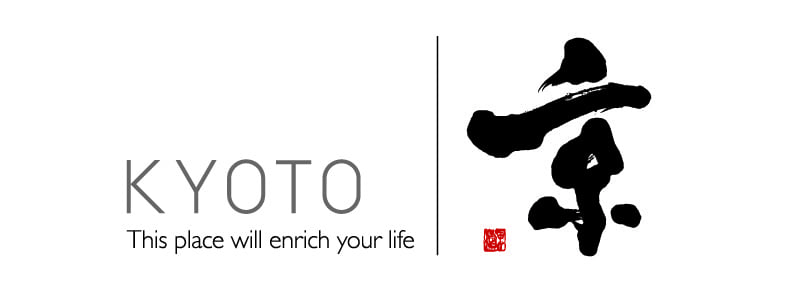Term archive
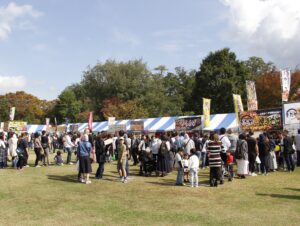
投稿タイプ:events
Kyotamba Food Festival
The town of Kyotamba is known for producing many branded food such as Tamba brand black beans, Tamba chesnuts, and Tamba Dainagon azuki beans.
Visitors to the Kyotamba Food Festival can enjoy all of these delights, here where a great many of these local foods are presented together.
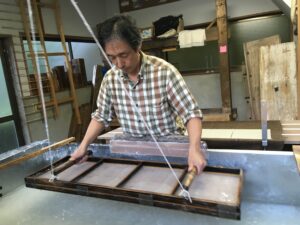
投稿タイプ:sightseeing
Kurotani District
Kurotani washi paper is a tradition that has been protected for 800 years, and is also designated an Intangible Cultural Property by Kyoto Prefecture.
At the Kurotani Washi Paper Hall, in addition to washi paper crafts for sale, you'll find papermaking activities (reservations required), and you can also tour the workship and exhibition room.
The Maple Leaf Festival is held with great pomp every November.
Kurotani is a nature-filled area—with the babbling of the Kurotani-gawa River, the singing of frogs, and the colorful carpet made by the gingko and maples in the fall—that's certainly worth visiting once.
You can also purchase washi paper crafts, tour workshops, and try your hand at papermaking at the Kurotani Washi Paper Crafts Hall (Tel: 0773-45-1056), which is only open on weekends in the Kanbayashi area.
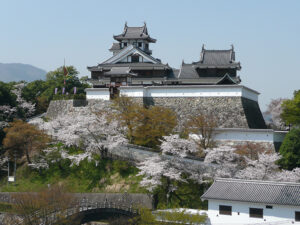
投稿タイプ:sightseeing
Fukuchiyama Castle
Before Fukuchiyama Castle, there was Yokoyama Castle, a fortress of the Yokoyama, the local ruling family. Akechi Mitsuhide, the samurai who subjugated Tamba, rebuilt the fortress using state-of-the-art castle-building techniques of the time, and renamed it Fukuchiyama Castle. There used to be many structures here, including a three-layered four-storied castle tower and expansive Ninomaru Palace. However, these were taken down one after another, following the abolition of feudal domains in 1871. All that remained was a stone wall between the raised foundation and castle keep, a well called Toyoiwa-no-I, and a guard station. The castle currently standing was reconstructed over a period of three years, and construction was completed 1986. The interior is used as the Fukuchiyama City Folk Museum. The castle park also contains the Fukuchiyama Sato Taisei Memorial Art Museum. Exhibits there are centered on works by the late Sato Taisei, a master of Japanese-style painting.
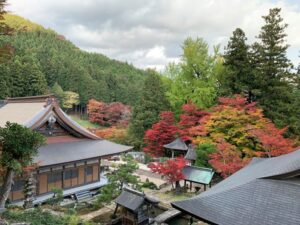
投稿タイプ:sightseeing
Choan-ji Temple
Choan-ji Temple is said to have been founded in accordance with the imperial command of Prince Maroko, a brother of the legendary Prince Shotoku. With its rich natural environment and a dry landscape garden, Choan-ji Temple is a very popular Buddhist holy site, but it is also open to the public for recreation and entertainment. Inside the Yakushi-do Hall, you'll find a great majestic dragon carved into the ceiling by a carver famous in the Tanba and Tango area. There is also a park located inside the temple grounds, Choan-ji Temple Park, which is operated by Fukuchiyama City. The 500 maple trees growing on the Choan-ji Temple grounds have earned it the title "Tamba Province's Autumn Foliage Temple," and in mid-November it boasts spectacular autumn shades of red, green, and yellow. Choan-ji Temple is also a popular spot for foreign couples to take Japanese-style wedding photos.
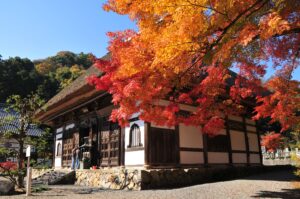
投稿タイプ:sightseeing
Ankoku-ji Temple
Ankoku-ji Temple was founded in the mid-14th century by order of Ashikaga Takauji, the founder and first shogun of the Muromachi shogunate. Thought to be born in the area, Ashikaga Takauji's grave is located on the temple grounds, with his mother and wife by his side (these gravescan be found to the right-hand side of the temple, past the pond area). Ashikaga Takauji's mother, Uesugi Kiyoko, prayed to the bodhisattva of childbirth at Ankoku-ji Temple, wishing to bear a baby boy, and today is it still popular amongst those praying for safe childbirth. This historic Buddhist temple owns a substantial number of nationally designated Important Cultural Properties (such as the Seated Shaka Buddha Triad), which are displayed at the main hall. These properties include Ayabe City's important cultural heritages, which are valuable symbols of the city's history. The temple's main hall is a thatched roof building (very uncommon for a temple) surrounded by cascading maple trees. The bright green moss covering the thatched roof contrasts beautifully with the red, orange, and yellow autumn foliage within the grounds, making the temple seem like something out of a fairytale.
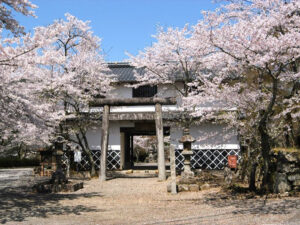
投稿タイプ:sightseeing
Yamaga Castle Park
Yamaga Castle Park in Ayabe City, Kyoto Prefecture, is one of the "200 Best Nature Spots in Kyoto" because you can enjoy the nature of the park year round, with plums and cherry blossoms in spring, fresh greenery in summer, and autumn leaves in autumn. The park holds the "Sakura Festival" on Sundays in early April every year, where you can hear Yamaga drums being played, buy local specialties, and try to catch fresh rice cakes or "mochi" in the "mochimaki" ritual where mochi is tossed out over the gathered crowd. In addition, the autumn leaves are beautiful in mid-November adding color to the garden and the restored castle gate.
The park is not only a great place to enjoy nature, but to learn about history. Yamaga Castle was the home of the Waku family, a great family during the Edo period but it was attacked by Akechi Mitsuhide. After the castle fell, a camp was set up by Moritomo Tani, who was ordered by Hideyoshi Toyotomi to be the lord of the Yamaga domain. The site of the camp is now maintained as a park and the second floor of the restored castle gate holds a Yamaga Museum and has materials related to the Tani Clan including armor and ancient documents. What’s more, on the north side of the park are the remains of the castle moat.
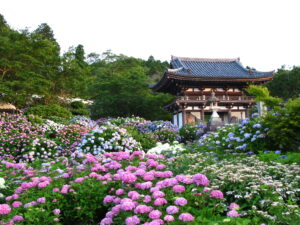
投稿タイプ:sightseeing
Tanshu Kannon-ji Temple
Located in Fukuchiyama, Tanshu Kannon-ji Temple was founded in 720 by the Indian monk Hodo. In 961 the monk Kuya built the seven temple buildings (a formation known as shichido garan), and it became the center of worship of the bodhisattva Kannon in the Tamba area, reaching a peak in the Kamakura period (1192-1333). Today there are around 3,600 pieces of historical writings and teachings in the temple, which are designated cultural properties of Kyoto Prefecture.
Tanshu Kannon-ji Temple's eleven-faced Kannon statue is famous for healing, and granting good fortune and road safety. In the temple gardens, there are cherry blossoms in the beginning of April, hydrangea in June, colorful leaves in late autumn and wintersweets from January to February, filling the temple with different colors throughout the year. Tanshu-Kannonji Temple is also known as the Hydrangea Temple, and from June to July there are over 10,000 hydrangea flowers of 100 types blossoming in white, blue, purple and pink. On the 4th Sunday in June every year there is also a Hydrangea Festival, which is held with a series of events including the Buddhist preaching of the monks, and attracts many people each year.
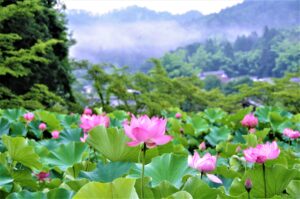
投稿タイプ:sightseeing
Gokuraku-ji Temple
Situated in Kyoto Prefecture’s Ayabe City, Gokuraku-ji Temple was said to have been founded in 1479. The temple belongs to the Rinzai sect, one of the five Zen sects of China, the head of whose branch is Tofuku-ji Temple. Gokuraku-ji Temple is famous for the ancient oga lotuses which bloom every summer. In 1952, their seeds were found in the remains of prehistorical Yayoi era (300 BC - 250 AD) items in Chiba Prefecture by the botanist Dr. Oga. The following year, the lotus seed sprouted and continued on to successfully bloom. It was therefore named the oga lotus in memory of the late Dr. Oga. Gokuraku-ji Temple received several seeds from Chiba Prefecture and every year the lotuses bloom beautifully.
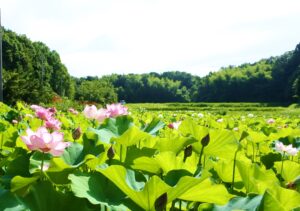
投稿タイプ:sightseeing
Ryogon-ji Temple
Ryogon-ji Temple, in Ayabe City, Kyoto Prefecture, is famous for the thousands of azaleas that bloom in the spring, and lotuses in the summer. In fact, Ryogon-ji Temple is the second of the 25 Most Famous Flower Temples of Western Japan. The temple grounds are also home to a 400 year-old camellia, a 500 year-old bo tree, and a 400 year-old crape myrtle, all of them ranked in the Top Hundred Ancient Trees of Ayabe. The sliding paper doors within Ryogon-ji Temple are patterend with crows in all four seasons, painted by the unique painter Ikka Nagai, famous for crow motifs. These patterns earned the temple the nickname Temple of Crows. (Visitors wishing to see the crows on the sliding paper doors must make a reservation prior to visiting.)
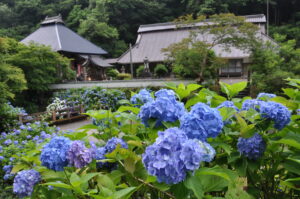
投稿タイプ:sightseeing
Horyu-ji Toko-in Temple
Horyu-ji Toko-in Temple, situated in Kyoto Prefecture’s Ayabe City, was built in 673 by the ascetic Rishu Sennin. A temple of the Koyasan Shingonshu branch, Horyu-ji Toko-in enshrines Yakushi Nyorai (Bhaisajyaguru), which is the buddha of healing and medicine. In its prime, it even had a Shichido garan (the seven halls composing the ideal Buddhist temple compound) construction. However, the temple has seen its ups and downs after several large fires and disasters.
Every year, in time with the peach season, the temple holds the Hina Festival, otherwise known as the Doll’s Festival or the Daughters’ Festival. 12 giant doll stands decorated with 500 Hina dolls, the same as those used in the Meiji era (1868-1912), can be seen at the temple during this time.
In early June, 2,500 hydrangeas bloom across the temple grounds, painting them with color. At the same time, the temple holds a Furin (wind chime) Festival, decorating the square before the main shrine with 750 wind chimes that make soothing music in the wind.
A matchmaker monk by the name of Chisokuin Mukaku, who introduced the famous samurai Sakamoto Ryoma to his wife, was one of the temple's believers. His writing was carved in stone at the temple, and has now become a spot for believers to pray for good matchmaking.
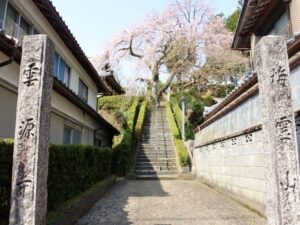
投稿タイプ:sightseeing
Ungen-ji Temple
Situated in Kyoto Prefecture's Ayabe City, Ungen-ji Temple is thought to have been built in the Muromachi era (1336 - 1573) by the head monk of nearby Ankoku-ji Temple.
At the top of the stone steps leading to the temple entrance stands a beautiful weeping cherry blossom tree. Thought to be over 100 years old, it was selected as one of the 100 famous trees of Ayabe City.
The cherry blossom tree is said to have been taken from a branch at Ankoku-ji Temple (a larger temple with a 600-year-old cherry blossom tree), a temple that has connections to Ashikaga Takauji (the first shogun of the Muromachi era). Continuing up the stone steps past the Kannon Hall, there is a stunning view of the magnificent weeping cherry blossom and the mountains in the distance.
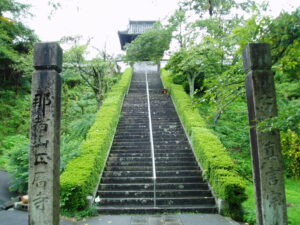
投稿タイプ:sightseeing
Shoreki-ji Temple
Located in Ayabe City next to the Yura-gawa River, Shoreki-ji Temple was built in the year 942. The temple enshrines a statue of the bodhisattva Kannon carved by the temple’s founder, Kuya, a famous priest in the Heian era (794-1185). The statue can only be seen by the public every 33 years. Some of the temple's other treasures include a Thousand-Armed Kannon statue (a designated cultural property of Ayabe City) and a nirvana painting (an Important Cultural Property).
The dry rock garden, which was built in the middle of the Edo period (1603-1868), is a designated scenic spot in Kyoto Prefecture. There are annually flowering plants such as azaleas and bushclover that color the garden throughout the seasons, as well as many ancient trees, including a zelkova tree selected as one of the ten famous trees of Ayabe City.
